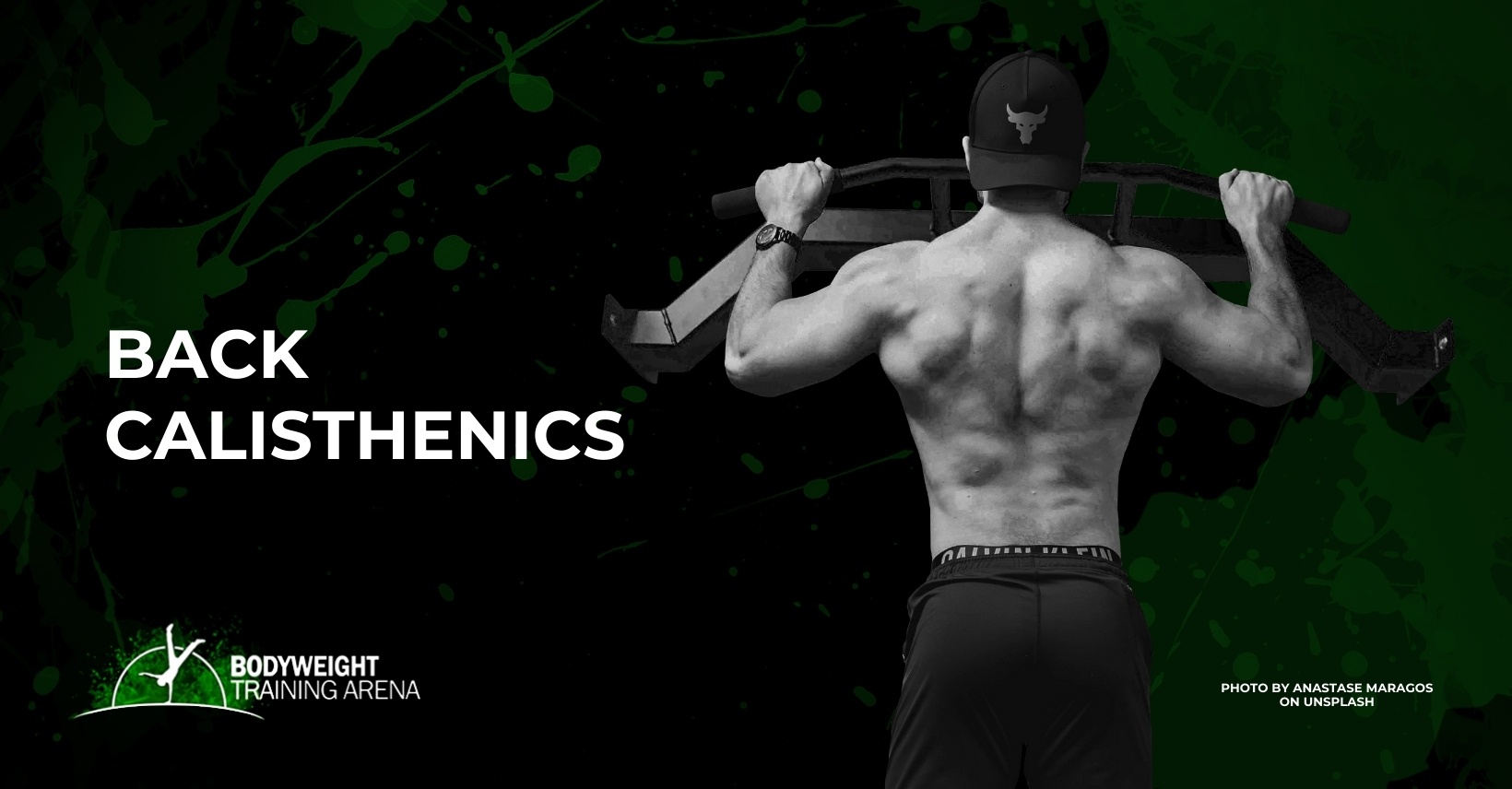
Welcome to our ultimate guide to back calisthenics!
Before we dive into the top exercises and routines, let me share something I wish I’d known when I started out.
After training thousands of athletes, we’ve noticed a common mistake: blindly selecting exercises or a workout routine without considering your current level. With the plethora of YouTube videos and random training programs available, it’s easy to dive in without a second thought.
This approach often leads to two things: struggling with exercises beyond your capabilities, risking injury, or facing ineffective workouts. It’s a common dilemma. Generic routines lack personalization and often fall short of delivering results.
As you explore back exercises in calisthenics, keep in mind that some exercises may be too challenging, while others may be too easy. Finding the right level is crucial to avoiding injury and maximizing results.
That’s why we’ve developed The Movement Athlete Academy, a personalized, progressive, and adaptive training program that utilizes AI to create customized plans and guide you through your journey. Interested?
Take our FREE assessment to get started with a personalized plan. No more guesswork or injury risks. Trust me, it’s a game-changer. Let’s embark on this back calisthenics journey together!
Ok, lets talk about back calisthenics
As a calisthenics coach, I can’t stress enough how crucial it is to pay attention to your back muscles. Despite being frequently overlooked, your back plays a pivotal role in maintaining good posture and enhancing athletic performance and overall well-being.
Strengthening your back muscles yields numerous health benefits and enhances your physical capabilities, both in your fitness journey and daily activities.
In this post, I’ll guide you through a series of bodyweight exercises specifically designed to target and build your back muscles, empowering you to attain the strength and athleticism of a true athlete!
What is the Posterior Chain

Before jumping into the actual workout, let’s first understand the muscles and function of the back so you can get a better grasp of how each movement and how it relates to our goal of back development.
The posterior chain consists of all the muscle groups on your backside with each muscle having its own specific functions.
We’re not just talking about the muscles of your upper body. The posterior part of the shoulders, arms, and legs are also included in our concern.
Let’s quickly talk about them without getting into deep with the anatomical jargon of our muscles.
Rhomboids
The rhomboids are located between your scapula and are activated when you move your shoulders backward. Upper limb movement and stability of the shoulder girdle depend on the function of vital muscles, such as those in your rhomboid. They can be strengthened through shoulder sets that activate retraction or moving the shoulders closer together which is essential to many pulling movement patterns and calisthenics exercises.
Latissimus Dorsi
The lats are very popular and one of the most recognized muscles when talking about the back. It is also one of the largest muscles in your back, which attach from your arm all the way down to your lower back. They are responsible for bending forward and lifting things up vertically as well as horizontally. The latissimus dorsi muscle stabilizes your back while extending your shoulders, and is often simply referred to as the “lats”.
Posterior Deltoids
The posterior deltoids are the back part of your shoulder. Rotating your shoulders outward and pulling things towards your face work these muscles. It’s commonly an undertrained muscle group that we will leave off.
Trapezius
The trapezius is a muscle that looks like a shape of a triangle. It starts at the back of your head and goes to the bottom of your spine. There are three different groups of fibers: upper, middle, and lower. The upper part of the trapezius makes your shoulder blade go up and move closer to you. The middle part moves your shoulder blade away from you, or it retracts it. The lower part of the trapezius can help with moving your shoulder blade up and down.
Glutes
The gluteus maximus is one of the strongest muscles in the human body and is located in the buttocks. Its main function is to extend and rotate the hip joint. Upper fibers can also aid in the abduction of the hip, whereas lower fibers are primarily responsible for adduction.
Hamstrings
The hamstrings are a group of three muscles that run along the backside of your thigh from your hip to just below your knee. They allow you to extend your leg straight behind you and bend it so that your foot is in contact with the ground.
Erector Spinae
The erector spinae muscles are on each side of the back and go up to your neck. They help you stand straight and give you more flexibility by extension.
Triceps
The Triceps is a large muscle (bigger than your biceps) on the back of your arm. It helps you to straighten your arm and make it move backward.
The Importance of Back Calisthenics

The posterior chain is made up of a sequence of muscles that are located on the backside, including all the major muscle groups in your posterior chain. This set includes the ones mentioned above.
The importance of training this group is two-fold: firstly because it has such an impact on our posture; secondly, because it helps to stabilize us against injury when we’re performing other exercises and movement patterns.
When these muscles aren’t strong enough they can cause your spine to round forward which will lead you into bad habits with poor body alignment. Your spinal position also affects how much oxygen gets pumped around your body – so if you have a weak lower back or postural problem then training your posterior chain can do wonders for your posture.
Building your back muscles will help to correct any hunching or rounding that might be happening as a result of weak shoulder blades and/or hamstrings. A strong upper back can also improve mobility for many people with thoracic outlet syndrome, an excruciating condition caused by pressure on nerves running from the neck down past the armpit into those hands.
Aside from that, training the back can eliminate muscle imbalances that can cause movement dysfunction in other areas of the body, which in turn can cause injury.
All about the Calisthenics Back Workout Routine

calisthenics back workout
What equipment do I need
Training your back with bodyweight is fairly minimal in terms of equipment requirements. All you need is:
- a pull-up bar
- a sturdy wall
- an elevated surface
These equipment are accessible and affordable, but if you’re looking for other alternatives for these items, check out the article below:
The Ultimate Guide on Calisthenics Equipment and Cheap Alternatives
Circuit training
We’re going to implement a circuit for this routine which is mostly composed of exercises that require your body to move from one exercise station to the next in succession with no or minimal rest. Longer rest periods are placed at the end of each round.
This type of training provides a full-body workout and is best for those who want shorter workouts or are looking for variety in their routine.
Bodyweight back exercises

Now let’s discuss the best bodyweight back exercises that we will use for this workout to develop a solid posterior chain efficiently.
We’ll do a full-body workout that hits our upper back, lower back, glutes, and triceps.
If you’ll also notice, we won’t be introducing any additional core exercises, since our main focus is our back. But all of these calisthenics back exercises hit the BACK AND CORE. It’s just in the nature of bodyweight exercise.
Before the workout, take note that a solid grasp of the fundamentals is required. This workout is not ideal for beginners especially if you don’t have any pull-ups under your belt.
Although these exercises are scalable, it’s best to start off with a beginner workout like this one: Calisthenics Beginner Workout
Chin-ups

How to perform:
- Grab a bar with your palms towards you and hands shoulder-width apart.
- Pull your shoulder blades back and down.
- Pull your body upwards until your chin is over the bar.
- Lower down with control.
- Repeat for reps.
Coaching Pointers:
- Imagine pulling your elbows towards your hips for better back activation
- Legs together and straight if possible
- Fully engage the core in the whole movement
- Lower down until arms straight
- Full range of motion
- Use resistance band if too demanding
Handstand military push-ups
The handstand push-up is commonly known to develop primarily the shoulders, chest, and triceps. By slightly adjusting the body position, it becomes more of a back exercise that targets the posterior deltoids, rhomboids, biceps, and traps. This exercise is not exactly for beginners.
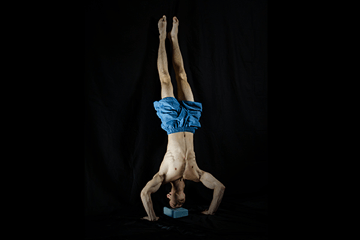
- Move into a handstand with your back against the wall. Hands slightly wider than shoulder-width and not too far away from the wall.
- Lower down your body by bending your arms.
- Push back up to get back into the starting position.
- Repeat for reps.
Coaching Pointers:
- Spread your fingers to widen your grip and have more control in your hands
- Point your feet for additional leg tension
- Avoid arching in your lower back
- Always keep your shoulders pushed away from your ears via depression
- Put an elevated surface on the floor to limit your range of motion if full range is too demanding
Glute/ham raises
We’ve started by giving some love to the upper body’s back muscles. Now we’ll shift our focus a bit to the legs. This exercise targets the glutes and hamstrings while also developing the core.
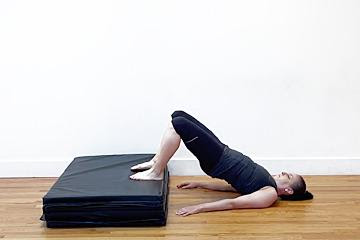
How to perform:
- Begin by lying on the floor with bent knees and arms beside you.
- Push your hips up to the air by using your glutes and hamstrings.
- Hold the top position for a brief moment.
- Lower down with control.
- Repeat the motion.
Coaching Pointers:
- Focus on using the glutes and hamstrings for movement
- Do not arch your lower back
- The farther away your feet are from your body, the harder the exercise
- Move slow as possible to increase tension in your glutes
- Using a resistance band that moves across your body can also increase the intensity of the exercise
- Add elevation on your feet to increase the intensity
Tricep dips
Back to the upper body. Tricep dips are a great exercise to target, obviously, the triceps, but also the posterior deltoids and back muscles if the exercise is done with good form. You will need an elevated surface or gymnastics rings to perform the exercise.
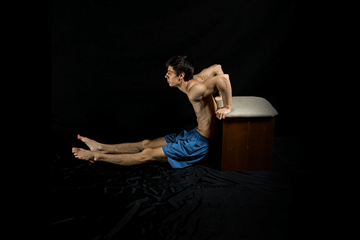
How to perform:
- Sit on the edge of the surface with good posture and place your hands shoulder-width apart near your glutes.
- Push down to the surfaces to keep your arms straight.
- Extend your legs while keeping them on the floor.
- Lower your body by bending your elbows to 90 degrees.
- Push back up to the starting position.
- Repeat this movement for reps.
Coaching Pointers:
- Keep your elbows tucked close to your body
- Move only along your mobility permits
- Retract and depress your scapula
- Maintain a good posture throughout the movement
Close-grip pull-ups
Another pull-up variation that still targets the lat muscles, but has to help from your chest and biceps. This added assistance is needed to increase the volume of your lats because we’ll still be using it for other pull-up exercises.

How to perform:
- Begin by hanging on a pull-up bar with hands close together and palms facing you.
- Engage your core then pull your scapula back and down.
- Pull your body upwards until your chin is over the bar.
- Lower down with control.
- Repeat for reps.
Coaching Pointers:
- Imagine pulling your elbows towards your hips for better back activation
- Lower down until arms straight
- Full range of motion
L-sit pull-ups
Thanks of progressing in calisthenics , this pull-up exercise has a heavy emphasis on your lats by changing the center of gravity. This exercise is a challenging variation that targets the upper back muscles but also requires a strong core, and good lower body mobility. It’s definitely a great back exercise you need to include in your workout.

How to perform:
- Start on a pull-up bar with a wider than shoulder-width hang.
- Lift your legs until parallel to the ground.
- Depress and retract your scapula
- Pull up your body until your chin is over the bar.
- Hold the top position for a brief moment.
- Lower down with control to the bottom hang while still maintaining the l-sit.
- Repeat for reps.
Coaching Pointers:
- Point your feet for additional lower body tension
- You can add a wide grip pull for more lats isolation
- Maintain the l-sit position throughout the pull-up motion
- Imagine pulling your elbows towards your hips for better back activation
- Lower down until arms straight
- Full range of motion
- Use resistance band if needed when exercise becomes too demanding
Inverted rows
Bodyweight row is an important component for your back workout and back muscles development. This exercise is basically a horizontal pull-up so it still targets the back muscles.
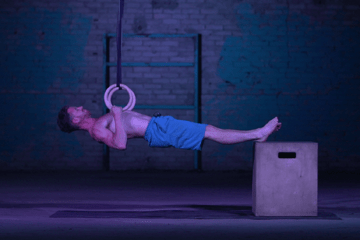
How to perform:
Coaching Pointers:
-
- Underhand or overhand grip depending on the comfortability of available equipment
- The more horizontal your body is, the harder the exercise.
- Keep elbows tucked close to your body
- Active the lat muscles when initiating the row
- Add resistance band across the body for more intensity
Muscle-ups
Muscles ups are both excellent for the posterior and anterior chain. The combination of the dip and pull-up motion allows for a complete body workout. This skill, however, requires mastery of both calisthenics exercises and proper muscle-up technique.

How to perform:
- Hang in a pull-up bar.
- Depress and retract your scapula.
- Pull your body explosively until your chest is at the bar.
- Lean forward into the bottom position of the dip.
- Push down until arms are straight to complete the dip segment.
- Lower down into the pull-up position.
- Lower down to the dead hang.
- Repeat for reps.
Coaching Pointers:
- Key points to pull-up explosively and lower down with control
- A wide grip pull can assist in better lat activation but shoulder-width can also do depending on your skill level’
- Elbows tucked near the body
- Avoid using momentum by kicking to maximize lat activation
- Use resistance band if too demanding
Superman 10 to 15 reps
Supermans must be included in any back workout. This is one of the best bodyweight back exercises that target the complete back without using any equipment, just the floor, and is very simple to do.
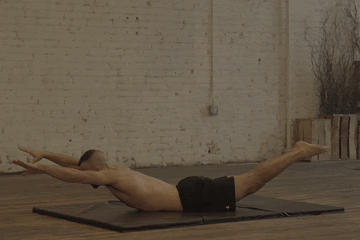
How to perform:
- Lie down on the ground with belly facing the floor with straight legs and arms overhead.
- Pull your legs and upper torso upwards by engaging your back muscles.
- Hold the top position for a brief moment.
- Lower down with control.
- Repeat for reps.
Coaching Pointers:
- Move to your back mobility permits
- Use your arms only to guide and not use momentum for the movement
- Exercises should be pain-free
Closing off

Here’s a quick rundown of the benefits of having a solid back:
- Better posture
- Eliminate muscle imbalances
- Stronger pull mechanics
- Better back physique
- Enhanced explosiveness
- Better quality of life
So never skip on your back workout.
What if you can’t do these exercises yet?
Don’t worry.
If you’re a beginner or struggling with some of the exercises, it only means that you need to first establish a stronger calisthenics foundation. You can do this with a PERSONALIZED workout that caters to your skill level and needs.
Beginners have also different levels within that level. That also goes for intermediates and advanced because everybody is different.
That’s why beginner/intermediate/advanced workouts are actually hurting your progress. They don’t offer specificity to the individual demands.
If you want to get a complete calisthenics back workout that’s PERSONALIZED, ADAPTIVE, EFFECTIVE, and SAFE head on over to The Movement Athlete.
Begin your journey by knowing where you are in your fitness journey with an assessment.

